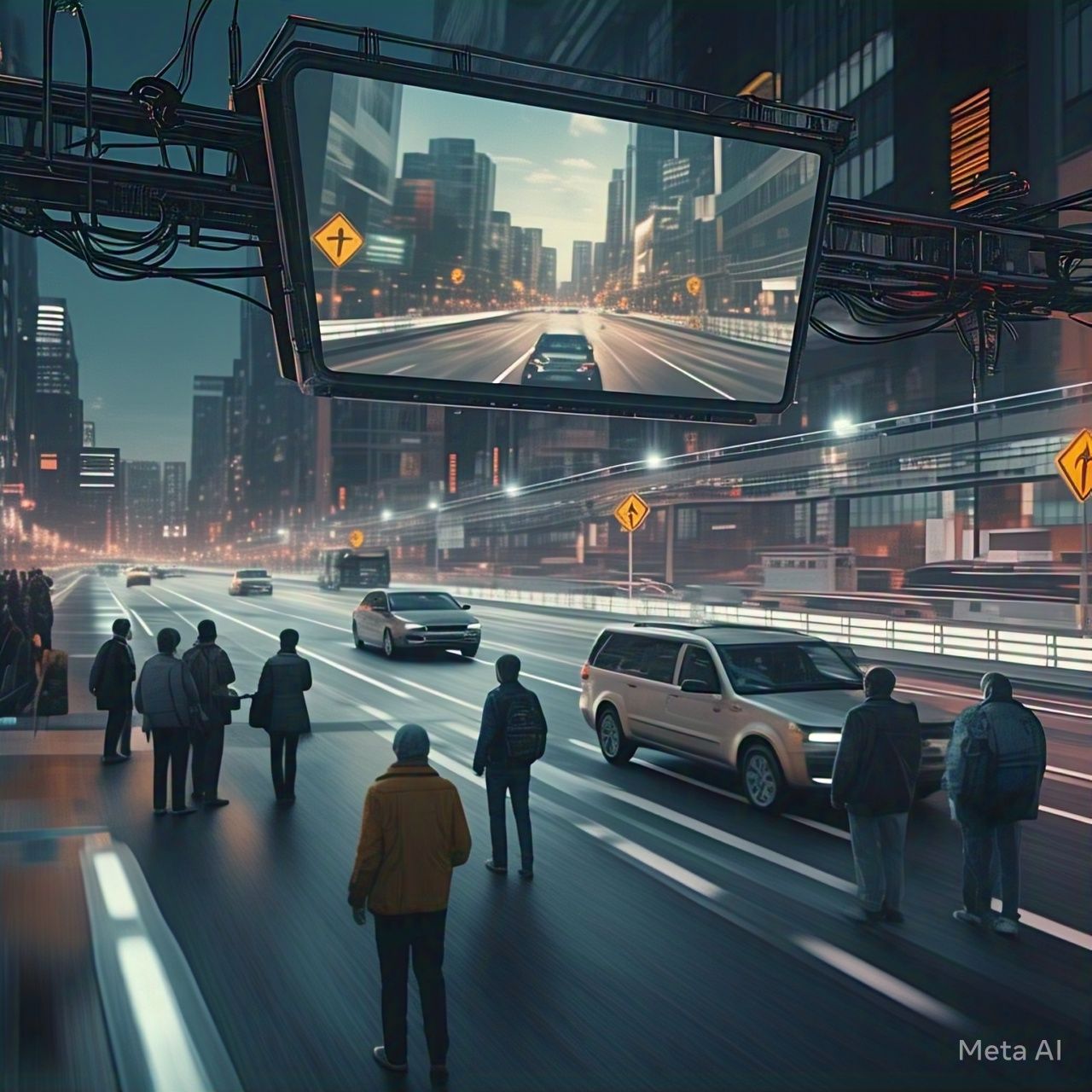Table of Contents
- Introduction
- How AI is Revolutionizing Road Safety
- Predictive Analytics for Traffic Violations
- AI-Powered Surveillance and Monitoring Systems
- Vehicle-to-Infrastructure (V2I) Communication for Safety
- AI-Driven Law Enforcement and Automated Penalties
- Benefits of AI in Preventing Traffic Violations
- Challenges and Limitations of AI in Road Safety
- The Future of AI in Road Safety
- Conclusion
- FAQs
1. Introduction
Traffic violations are a major cause of road accidents, injuries, and fatalities. Despite traditional enforcement methods, reckless driving, speeding, and signal violations continue to be widespread. Artificial Intelligence (AI) is stepping in as a game-changer by predicting and preventing traffic violations before they happen. Through advanced data analytics, real-time monitoring, and automated enforcement, AI is making roads safer and reducing human errors.
2. How AI is Revolutionizing Road Safety
AI enhances road safety through machine learning, real-time data analysis, and predictive modeling. Key applications include:
- Intelligent traffic monitoring systems that detect rule violations.
- Automated license plate recognition (ALPR) for tracking offenders.
- Predictive models that forecast risky driving behavior.
- AI-assisted driver behavior analysis using onboard cameras.
These technologies help law enforcement agencies prevent accidents rather than just reacting to them.
3. Predictive Analytics for Traffic Violations
Predictive analytics enables AI to analyze past traffic data and predict potential violations before they occur. This involves:
- Studying driving patterns to identify high-risk drivers.
- Analyzing road conditions to anticipate accident-prone areas.
- Real-time risk assessment to alert drivers of potential hazards.
By proactively addressing risk factors, AI significantly reduces traffic violations and road accidents.
Table: Traditional vs. AI-Enhanced Traffic Safety Measures
| Feature | Traditional Traffic Control | AI-Enhanced Traffic Control |
|---|---|---|
| Violation Detection | Manual policing | Automated AI-driven monitoring |
| Speed Limit Enforcement | Speed cameras | AI-predicted high-risk zones |
| Accident Prevention | Reactive response | Predictive analytics to prevent incidents |
| Traffic Signal Compliance | Fixed-time cameras | AI-based behavioral tracking |
4. AI-Powered Surveillance and Monitoring Systems
AI-driven surveillance systems enhance road safety through:
- Computer vision-powered cameras that detect red-light violations.
- Facial recognition technology to identify repeat offenders.
- Drone-assisted traffic monitoring to track reckless drivers.
These smart surveillance tools help authorities enforce road rules with greater accuracy and efficiency.
5. Vehicle-to-Infrastructure (V2I) Communication for Safety
AI enables vehicles to communicate with road infrastructure in real-time to prevent violations. Key applications include:
- Smart traffic signals that adapt to vehicle flow.
- AI-enabled road signs that update based on traffic conditions.
- Automated lane guidance to prevent lane-cutting violations.
This interconnected AI ecosystem ensures safer and more regulated road usage.
6. AI-Driven Law Enforcement and Automated Penalties
AI enhances law enforcement through:
- Automated violation ticketing using AI-monitored footage.
- AI-driven legal databases to track repeat offenders.
- Real-time alerts to police units for immediate action.
These measures ensure consistent enforcement and reduce manual intervention in traffic policing.
7. Benefits of AI in Preventing Traffic Violations
AI brings numerous advantages to road safety, including:
- Early detection of reckless drivers.
- Reduced human errors in traffic monitoring.
- Improved traffic flow through intelligent regulation.
- Lower accident rates and safer roads.
By leveraging AI, cities can drastically improve traffic discipline and road safety.
8. Challenges and Limitations of AI in Road Safety
Despite its benefits, AI-driven traffic safety faces certain challenges:
- High implementation costs – AI infrastructure requires significant investment.
- Privacy concerns – Surveillance-based AI raises ethical issues.
- Cybersecurity risks – AI systems are vulnerable to hacking.
- Legal and regulatory barriers – AI enforcement policies need standardization.
- Dependence on accurate data – Poor data quality can lead to errors in AI predictions.
Addressing these challenges is crucial for the successful integration of AI into road safety systems.
9. The Future of AI in Road Safety
The future of AI in traffic safety includes:
- AI-powered self-driving law enforcement vehicles.
- Advanced machine learning models that adapt to changing driving behaviors.
- Widespread adoption of V2X (Vehicle-to-Everything) communication for real-time safety updates.
- AI-driven traffic law compliance scoring for drivers.
With continuous advancements, AI will play a critical role in making roads safer and reducing violations.
10. Conclusion
AI is transforming road safety by predicting and preventing traffic violations before they occur. By leveraging smart surveillance, predictive analytics, and real-time law enforcement, AI significantly enhances traffic management. While challenges exist, the potential benefits of AI-driven road safety far outweigh the obstacles. As cities invest in AI infrastructure, safer roads and fewer accidents will become a reality.
11. FAQs
1. How does AI predict traffic violations?
AI analyzes historical traffic data, driver behavior, and real-time road conditions to anticipate potential violations and alert authorities.
2. Can AI completely eliminate traffic violations?
While AI significantly reduces violations, complete elimination depends on infrastructure development, driver cooperation, and policy enforcement.
3. What role does AI play in law enforcement?
AI automates violation detection, streamlines ticketing, and enhances monitoring through surveillance cameras and predictive analytics.
4. Is AI-based traffic monitoring legal?
Laws vary by country, but AI-based traffic monitoring is widely adopted in smart cities while balancing privacy concerns and law enforcement needs.
5. What is the future of AI in road safety?
Future developments include AI-powered autonomous traffic enforcement, V2X communication, and enhanced predictive analytics for proactive road safety measures.
Citations:
- World Economic Forum – AI and Traffic Safety
- International Transport Forum – Predictive AI in Road Management
- MIT AI Lab – Machine Learning for Traffic Control
- Smart Cities Council – AI-Powered Traffic Monitoring
- National Highway Traffic Safety Administration (NHTSA) – AI and Law Enforcement





